HVAC Training Package, ANSYS Fluent, 10 Practical Exercises for Expert Users
Original price was: $1,400.00.$155.00Current price is: $155.00. Student Discount
This training package includes 10 practical exercises in the HVAC field by ANSYS Fluent software for EXPERT users.
Click on Add To Cart and obtain the Geometry file, Mesh file, and a Comprehensive ANSYS Fluent Training Video.To Order Your Project or benefit from a CFD consultation, contact our experts via email ([email protected]), online support tab, or WhatsApp at +44 7443 197273.
There are some Free Products to check our service quality.
If you want the training video in another language instead of English, ask it via [email protected] after you buy the product.
Description
HVAC ANSYS Fluent Training Package, 10 Practical Exercises for EXPERT Users
This training package includes 10 various practical exercises in the HVAC field by ANSYS Fluent software for EXPERT users.
Solar Radiation
We start this training package with practical exercise number 1, which simulates the ventilation, air circulation, and solar radiation heat transfer in an office. The heat is emitted by people, objects, and electrical equipment inside the room. A man, a computer, and two lamps are modeled inside the room. In project number 3, radiation heat transfer inside a room with a balcony is investigated. The balcony has a glass roof and one glass wall. Due to the radiation of sunlight, both the room and balcony become warmer, and natural convection plays an important role in circulating the flow inside these spaces.
Problem number 6 simulates the radiation of solar rays into the room’s interior, considering the effects of a wooden partition as solar shading and a double-glazing glass façade. Argon gas has accumulated in the space between the two glasses of the double glazing. Because argon gas has low thermal conductivity. Practical exercise number 8 simulates the process of air conditioning in an office with several computers and simulators. The air conditioning system in the current model is of floor heating and ceiling cooling. In this way, the effect of buoyancy causes free heat transfer inside the computer room space.
Coronavirus
In project number 2, based on the CFD method, an attempt has been made to simulate the respiration of viral air from the mouth of sick coronavirus carrier students in the classroom. This model includes a computational domain in the form of a classroom and chairs inside which a student is modeled on each of the chairs. For each of these students, a surface is defined as the mouth as the source of the virus’s respiration and transmission. In practical exercise number 7, three different HVAC models were analyzed to compare the effect of different types of ventilation inside a room. A corona patient breathes on the breathing particles coming out from the patient’s mouth and how they spread inside this room. These types of HVAC include one-sided (single-sided), cross-sided, and lateral ventilation.
Industrial HVAC
Problem number 4 simulates the air conditioning inside a transformer room where three transformers are located. In this project, a two-piece room is designed with a divider in the middle, made by a wooden wall with thermal conductivity of 0.173 W.m-1.K-1. Inside the room, there are three transformers made of aluminum with thermal conductivity of 202.4 W.m-1.K-1, each of which has a constant heat source equal to 6060.606 W.m-3.
Phase Change Material (PCM)
Practical exercise number 5 simulates phase change material (PCM) for a room with passive air conditioning. In general, phase change materials are materials with organic compounds that can absorb and store large amounts of latent thermal energy. Thermal energy storage in these materials is achieved during the phase change process (solid phase to liquid or vice versa).
Parking HVAC
Problem number 9 simulates the air conditioning inside the car park. In this project, stacker parking is designed, with three floors and two cars located on two floors. The structure of this type of parking lot is such that there are moving platforms on which the cars are placed, and then these platforms with the car are lifted vertically up between the two columns and placed at a higher height so that the space under it, to provide the next car park on the lower platform.
Paper Validation (HVAC)
Finally, practical exercise number 10 simulates the HVAC process through a side supply air conditioning system in an office. This simulation is based on the information from a reference article [Comparison of air-conditioning systems with bottom-supply and side-supply modes in a typical office room], and its results are compared and validated with the results in the paper. The simulation is performed for a state of the paper where the side-supply air conditioning system is designed.
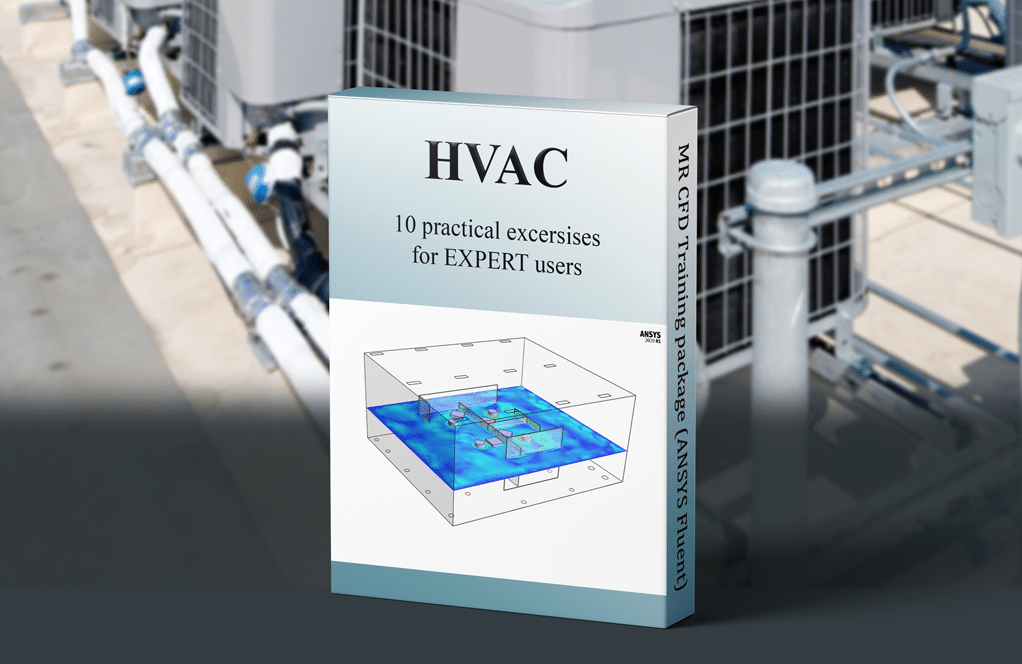
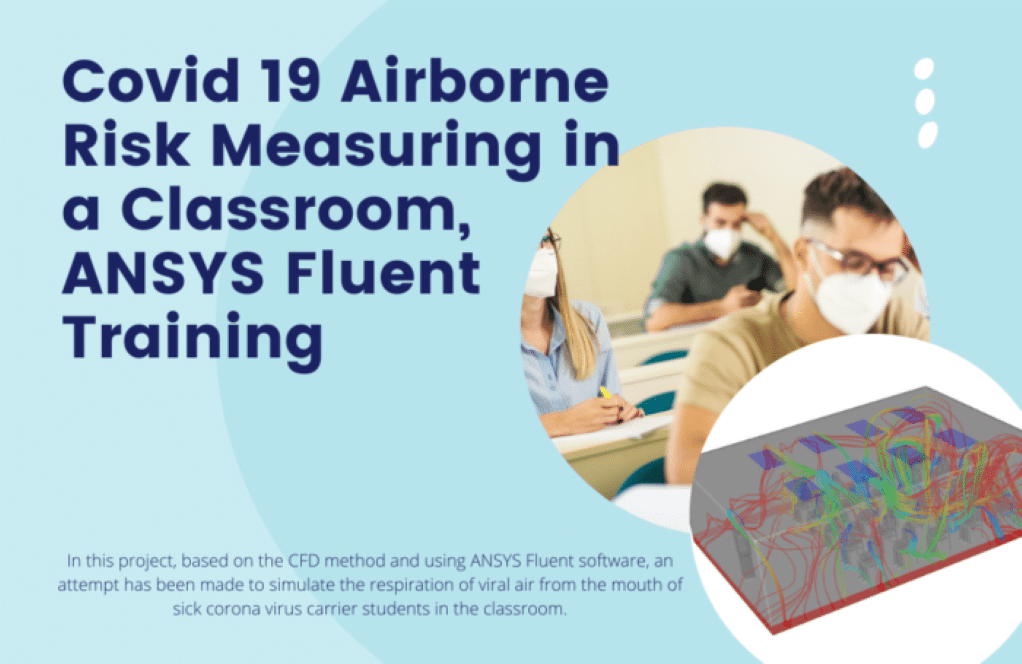
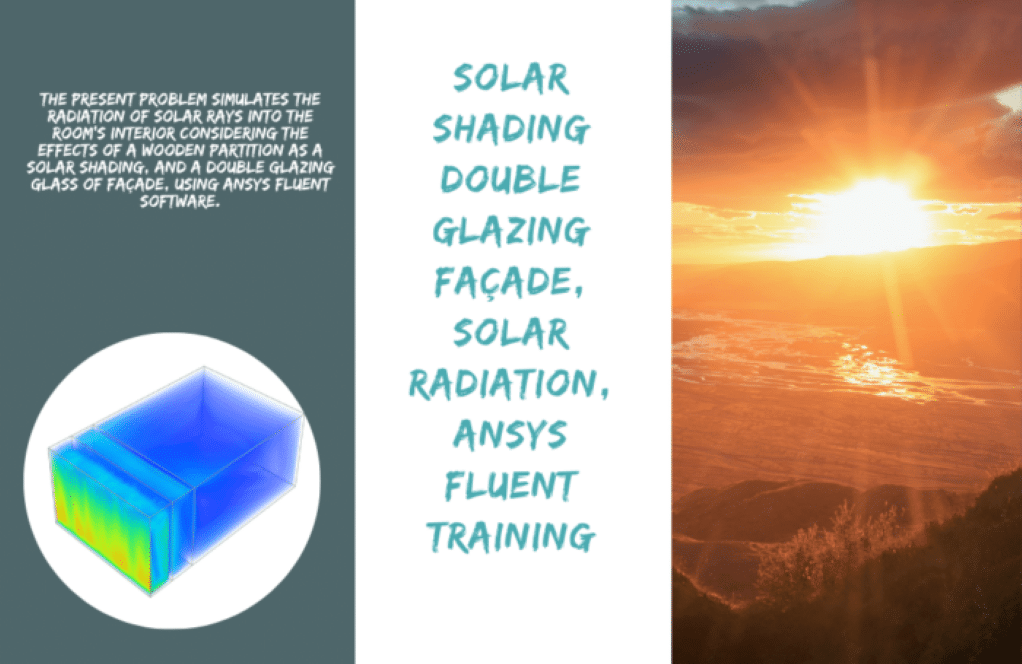
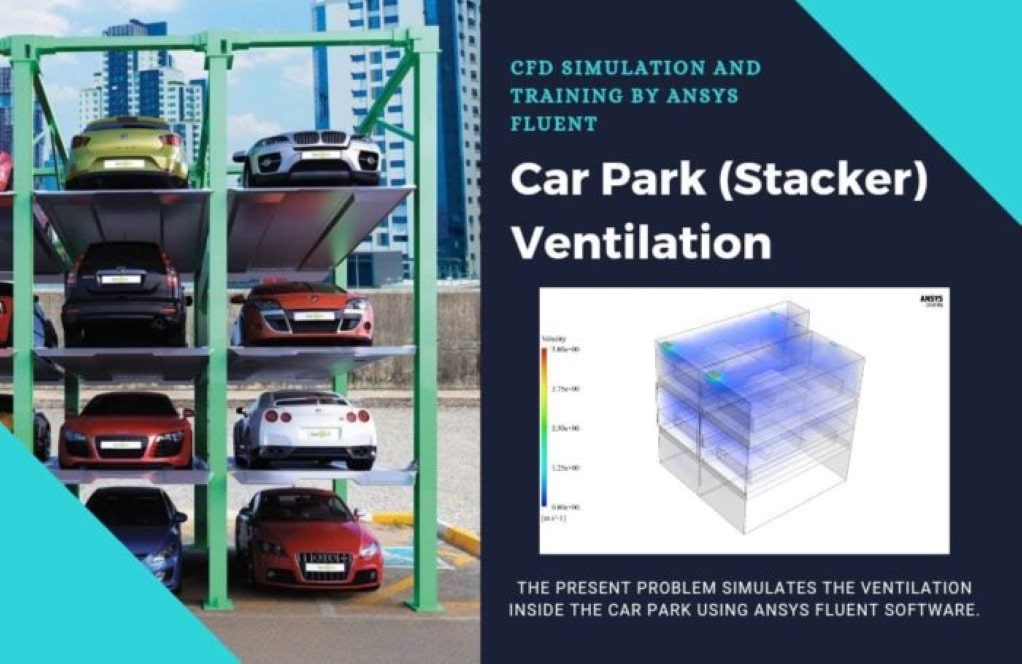
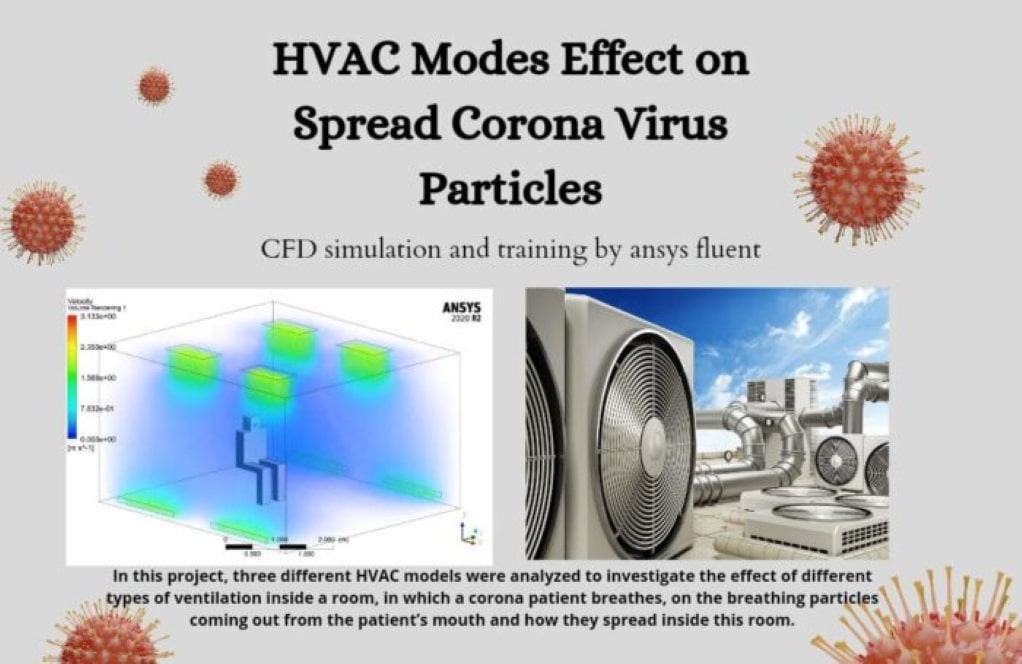
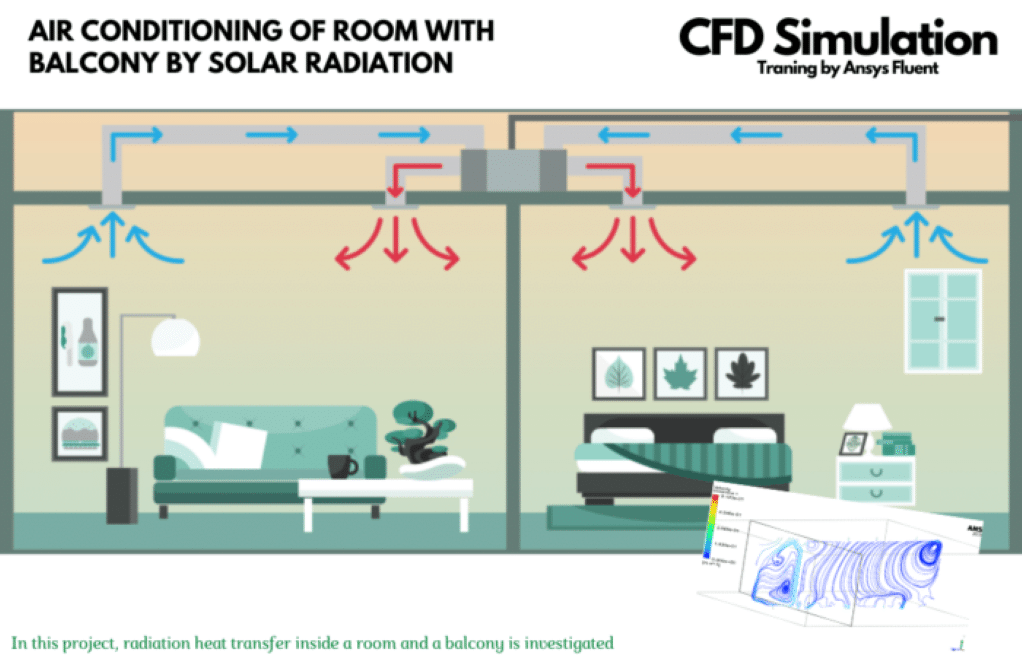
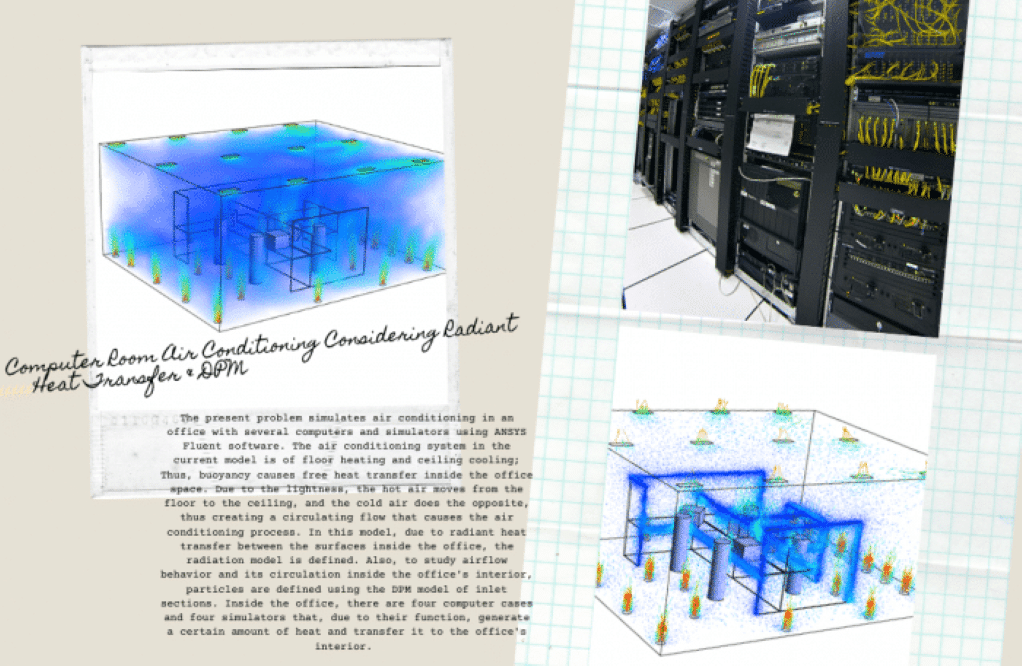
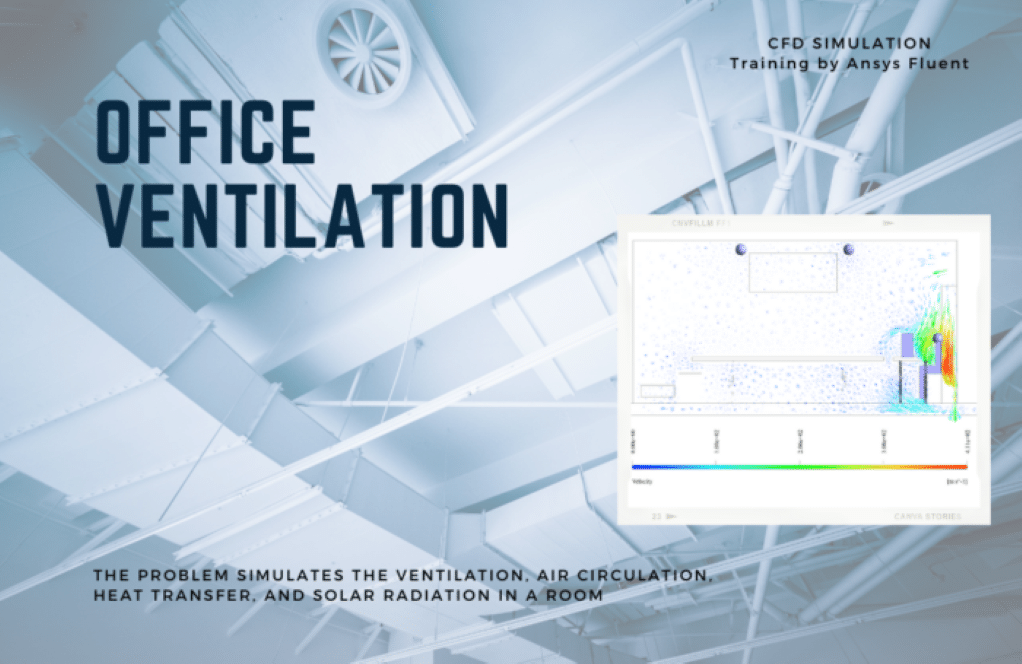
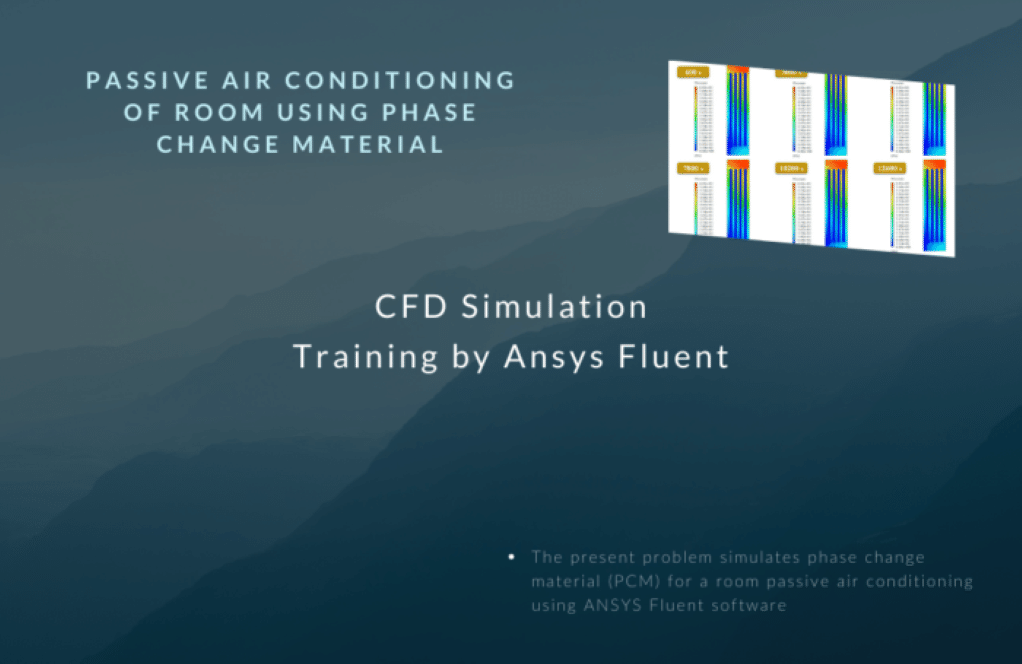
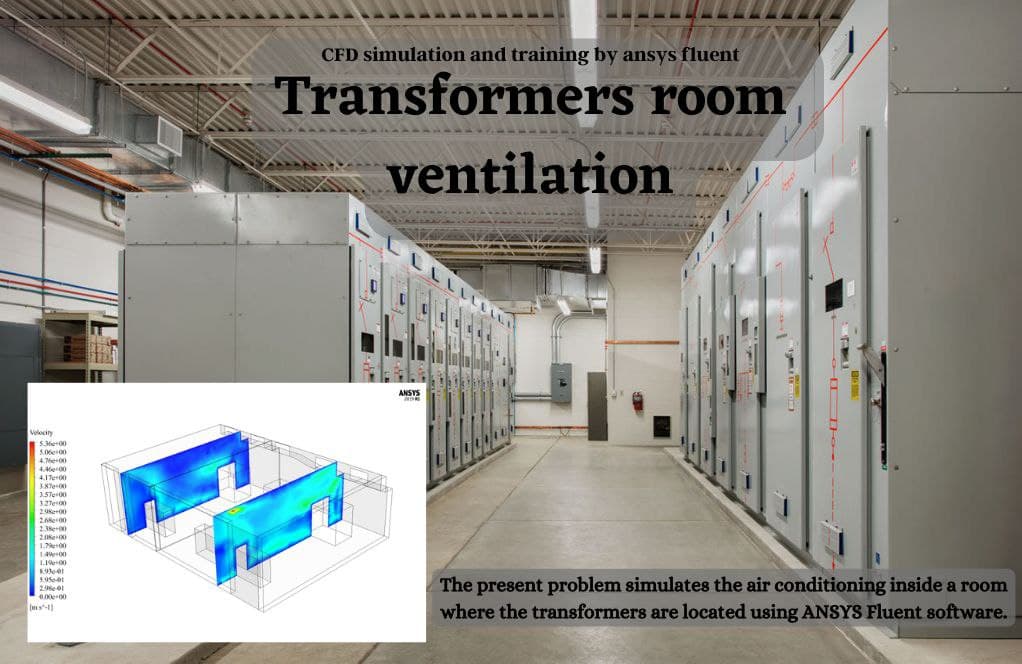
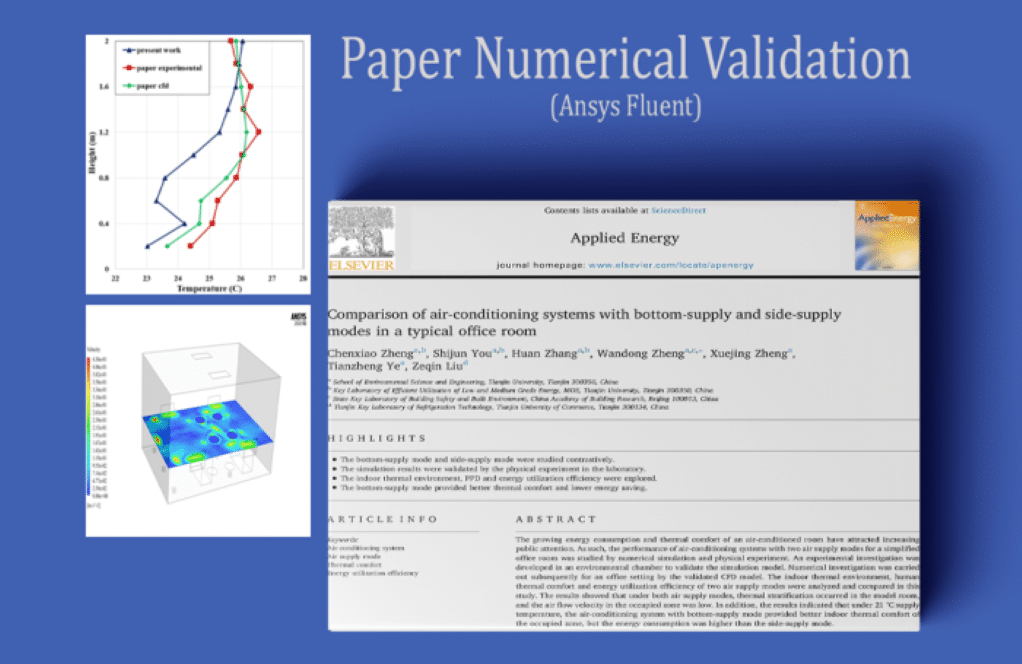
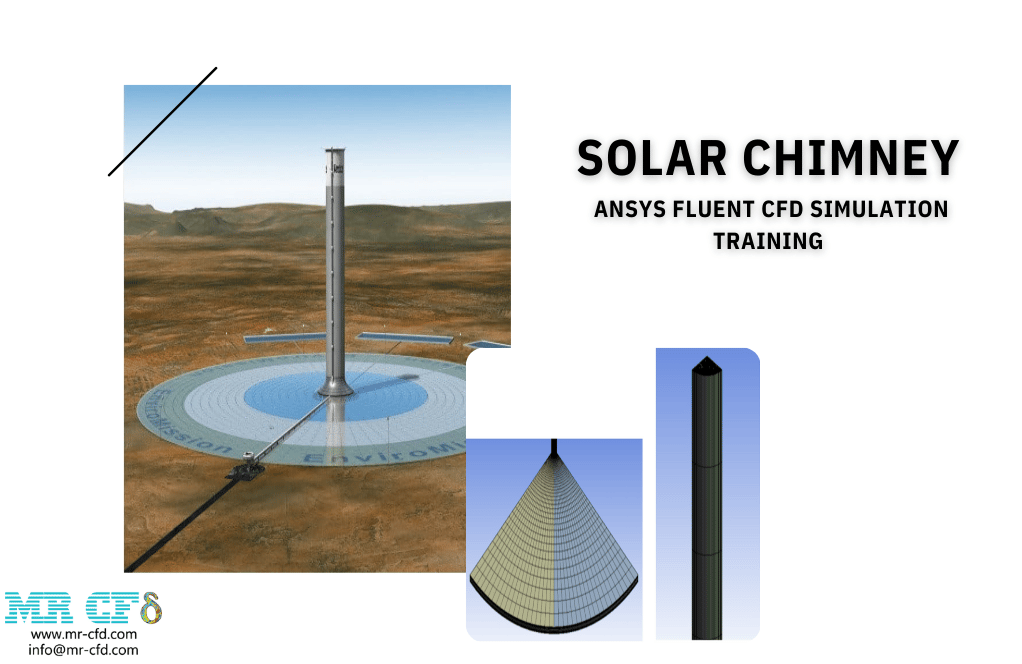
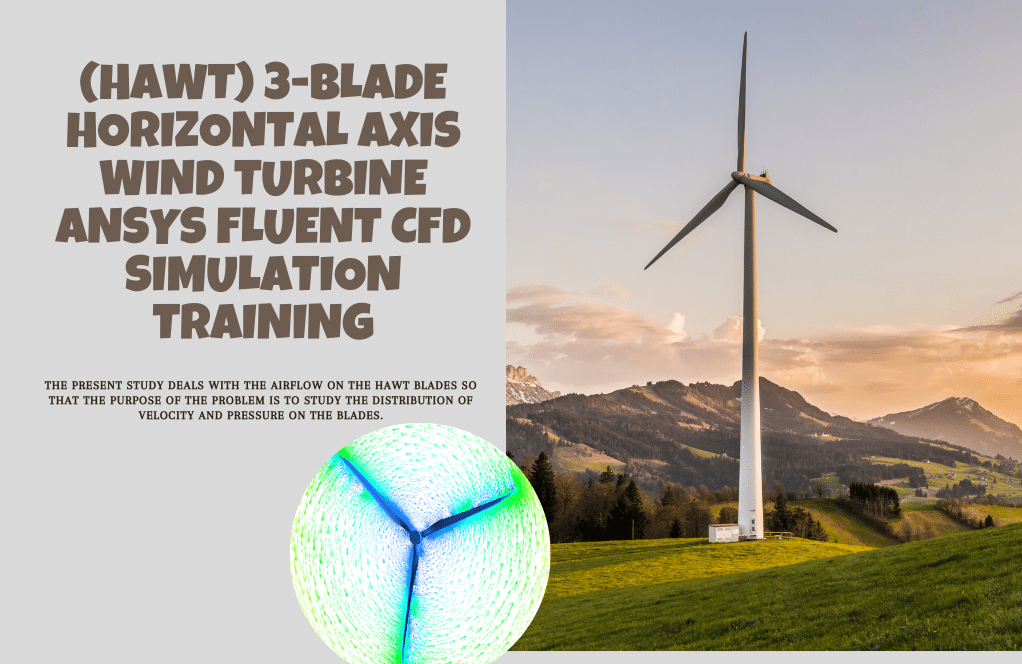
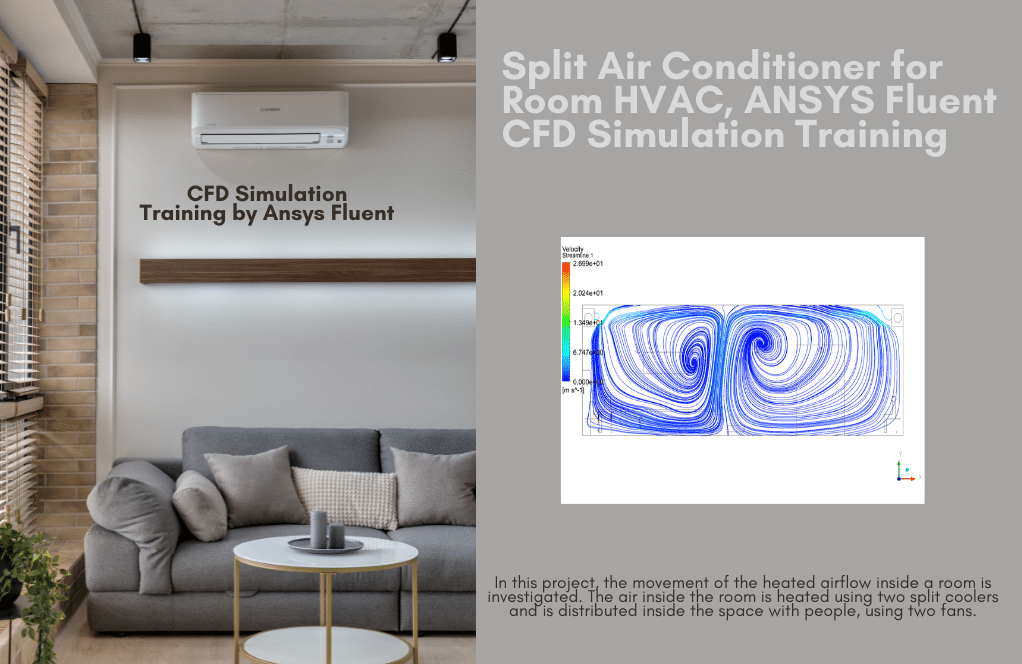
Bryce Mayert II –
I’m impressed with this comprehensive HVAC training package! It’s great that it not only covers various aspects of heating, ventilation, and air conditioning but also includes progressive applications like solar radiation assessments and coronavirus transmission. I especially appreciate the inclusion of practical exercises that echo real-life scenarios. Well done MR CFD!
MR CFD Support –
Thank you for your positive feedback! We’re glad to hear that our HVAC training package meets your expectations and provides you with practical and real-life applicable exercises. Should you have any further inquiries or require assistance with your simulations, do not hesitate to reach out.
Alyson Kozey –
I’ve recently finished the HVAC Training Package exercises and found them to be immensely resourceful. The step-by-step simulations, especially the one involving solar radiation heat transfer with the balcony design, helped clarify many concepts for me. Moreover, the critical analysis required for project number 7 provided a terrific challenge and deeper understanding of HVAC effects on virus transmission, a highly relevant topic these days.
MR CFD Support –
We hugely appreciate your detailed feedback and are thrilled to hear that our HVAC Training Package has significantly contributed to your understanding of complex scenarios like solar heat transfer and virus transmission within climate control systems. Knowing that these exercises provided clarity and a challenge is extremely rewarding. Thank you for choosing MR CFD, and we look forward to supporting your continued learning journey. If there are any other areas we can assist with, please do not hesitate to reach out.
Lilly Mante MD –
I’ve been using the HVAC Training Package for experts and I’m curious how the training package approach solar radiation effects in multiple scenarios?
MR CFD Support –
In the HVAC ANSYS Fluent Training Package for experts, solar radiation effects are approached differently across varied scenarios to simulate realistic environmental conditions. The exercises consider factors such as the room’s orientation, window sizes, shading devices like wooden partitions, and the configuration of interior spaces with objects like people, computers, and lamps. Different projects utilize techniques such as solar ray radiation, solar heat gain through glazing, and the impact of argon gas between double glazing to capture the nuanced effects of solar radiation on the thermal environment and HVAC performance.
Prof. Noble Quigley DDS –
I was impressed with the variety of exercises covering different scenarios in HVAC applications. Each exercise seems thoughtfully designed to equip expert users with advanced skills for tackling real-world challenges. Kudos on the comprehensive content!
MR CFD Support –
Thank you so much for your kind words! We’re delighted to know that you found our HVAC Training Package informative and useful for addressing real-world challenges. We strive to equip our users with the best practical experience, and we’re glad to hear we’re on the right track. Your feedback is greatly appreciated!
Pansy Graham –
I just finished the HVAC Training Package, and all the exercises were full of valuable hands-on experience. The projects were diverse, covering different aspects and challenges in the field of HVAC using ANSYS Fluent. The inclusion of solar radiation, coronavirus spread simulation, and phase change materials made these practicals top-notch.
MR CFD Support –
Thank you for your stellar review! We’re thrilled to hear you found the HVAC Training Package engaging and informative. It’s great that you appreciated the variety and complexity of the exercises, from solar radiation impact to the diffusion of airborne viruses. Your feedback is much appreciated, and we’re glad we could enhance your skills in HVAC simulations using ANSYS Fluent.
Emil Moore MD –
The selection of HVAC training exercises is incredibly thorough! I especially appreciate the inclusion of current issues such as coronavirus spread in classrooms, which seems both timely and relevant. It covers a strong variety of applications found in everyday environments that professionals encounter.
MR CFD Support –
Thank you for your positive feedback! We strive to provide up-to-date and comprehensive learning materials that reflect current industry needs and challenges. It’s great to hear you found the range of applications relevant and useful for real-world scenarios. If you have any more insights or need further assistance, don’t hesitate to reach out!
Harvey Langworth MD –
Great selection of exercises for advanced users to perfect their HVAC simulation skills in ANSYS Fluent!
MR CFD Support –
Thank you for the positive feedback! We are thrilled to hear that our HVAC Training Package met your expectations for enhancing your simulation expertise in ANSYS Fluent. If you have any more insights or need further assistance, feel free to reach out.
Amari Ziemann –
The detail in HVAC Training Package is impressive. I’ve learned so much about setting up various HVAC systems using ANSYS Fluent. Projects like the solar radiation simulations and phase change materials were novel concepts to me, and I feel much more adept at handling complex simulations in the workspace. Kudos to MR CFD for assembling such a comprehensive and expert-level series of exercises!
MR CFD Support –
Thank you for the positive feedback on the HVAC Training Package! We’re thrilled to hear that it enhanced your knowledge and skills in handling simulations with complex concepts such as solar radiation and PCM. Your success is a testament to the quality we strive for at MR CFD. Keep up the great work, and we’re here for any future learning needs you might have.
Adalberto Franecki –
I’ve been an enthusiast in the HVAC field for a while and this bundle seems comprehensive. But before I make a purchase, I’m curious if the training package covers how the HVAC systems respond to variable occupancy levels and changing external weather conditions?
MR CFD Support –
The HVAC training package focuses on various practical exercises that deal with HVAC systems in different settings and conditions. While it may not directly address variable occupancy levels or changing external weather conditions in every example, some of the exercises such as the simulation of solar radiation and air conditioning processes do consider the effect of the sun and thermal loads which can be comparable to changing weather conditions. For more specific scenarios, you might need to make slight modifications to the provided simulations or consult further documentation included within the training package.
Adam Leffler –
I finished all 10 programs and they were incredibly detailed and useful. I specifically found the solar radiation simulations very practical as the examples aligned well with my industry work. Are there scheduled updates or additional exercises that get added to this package regularly or as the software updates?
MR CFD Support –
Thank you for your positive feedback! We are really glad to hear that the HVAC Training Package was practical for your needs. We periodically review our training materials to ensure they are up-to-date with the latest software features. While specific schedules for updates can vary, we are committed to enhancing the learning experience for our expert users. We recommend you keep an eye on our website or subscribe to our newsletter to receive notifications about future updates and new exercises added to our packages.
Kaleb Yundt –
The HVAC Training Package projects cover diverse scenarios. Which project would you recommend starting with for a user who is particularly interested in solar radiation effects on heating and cooling systems within a room?
MR CFD Support –
For those particularly interested in the effects of solar radiation on indoor heating and cooling systems, we recommend starting with practical exercise number 1 on ventilation and solar radiation in an office, and then proceeding to project number 3, which investigates radiation heat transfer in a room with a balcony. These exercises specifically focus on solar radiation impact and would provide a coherent learning path on the subject matter.
Sophia Littel –
This HVAC Training Package is truly comprehensive and has definitely made me feel like an expert in the field. I’ve particularly appreciated the realistic scenarios provided, encompassing various challenges like solar radiation, coronavirus spread, and industrial settings. The exercises were well-structured, promoting a deep understanding of both the fundamentals and the sophisticated elements of HVAC design and CFD application within ANSYS Fluent. The blend of practical exercises actively engaged me in learning not only the theoretical background but also the application in real-world engineering problems.
MR CFD Support –
Thank you for your kind words and positive feedback! We’re thrilled to hear that our HVAC Training Package met your expectations and provided you with a comprehensive learning experience. Your enthusiasm for the in-depth knowledge you’ve gained is truly appreciated. It’s great to know that it helped you feel like an expert in the field. Keep up the excellent work!
Kaitlyn King –
I’ve been immensely impressed with the depth and practicality reflected in the HVAC training package by MR CFD! The assortment of exercises encapsulates a spectrum of situations varying from everyday office scenarios to specialized industrial contexts.
MR CFD Support –
Thank you for your positive feedback! We’re delighted to hear that our HVAC training package has met your expectations and has been helpful in expanding your understanding of different scenarios in ANSYS Fluent. If you need further assistance or if you’re interested in exploring more advanced topics, please don’t hesitate to reach out to us.
Alexzander Littel –
The HVAC Training Package sounds impressively thorough and comprehensive. The blend of practical exercises ranging from managing solar radiation effects to understanding air flow in scenarios related to COVID-19 is impressive and seems like it would provide robust expertise in HVAC system simulation using ANSYS Fluent. The focus on real-world applications, like office environments, classrooms, and even car parks, is particularly applicable to today’s engineering challenges.
MR CFD Support –
Thank you for your positive feedback on the HVAC Training Package! We’re thrilled to hear that you appreciate the depth and breadth of the practical exercises included. Our goal is to offer practical and real-world applications to ensure our users gain the expertise needed to tackle today’s engineering challenges efficiently. If you have any further questions or need additional guidance, our team is always here to support your learning journey!
Ms. Kaela Rohan –
I’ve learned so much from the HVAC Training Package exercises. Each case provided its own challenges, and I was really impressed with the way solar radiation and buoyancy were handled. The results gave me in-depth comprehension of airflow and temperature distribution, which is crucial for my current projects.
MR CFD Support –
Thank you for taking the time to leave such a thoughtful review. We’re delighted to hear that our HVAC Training Package has provided you with comprehensive knowledge and practical experience in challenging scenarios. Your success in advanced modeling and simulation such as solar radiation and buoyancy effects is exactly what we strive for. If you ever have any further questions or need assistance with your projects, please don’t hesitate to reach out!
Coleman Conn –
I’m currently analyzing a space with a similar solar radiation challenge to the one described in exercise number 6 with the wooden partition and double-glazing façade. Would utilizing argon gas in the space between the glasses significantly improve energy efficiency in comparison to just having air? How was this represented in the simulation results?
MR CFD Support –
Indeed, using argon gas between the panes of a double-glazing façade can help to improve the energy efficiency of the space. Argon gas has a lower thermal conductivity than air which reduces the heat transfer through the glass, and thus, helps to maintain a more consistent internal temperature with less energy consumption for heating or cooling. In the simulation, this was represented by cooler internal temperatures during sunlight exposure and a reduced need for active cooling, which would be reflected in the results section by demonstrating smaller temperature gradients and reduced heat flux through the glazing when comparing to just having air. The quantitative energy savings would generally be highlighted in the simulation summary and conclusions.
Ms. Letitia Cartwright DDS –
I’ve finished running through the HVAC Training Package exercises and must say, each project sharpened my skills considerably. However, I’d love to learn more about how to optimize the designs for energy efficiency using the data obtained from these simulations.
MR CFD Support –
Thank you for your feedback! We are thrilled to hear that the HVAC Training Package has helped improve your skills. In terms of optimizing designs for energy efficiency, one method involves analyzing the simulation data for thermal loads, airflow patterns, and temperature distribution. You can then make iterative changes to the HVAC design, such as improving insulation, adjusting the layout for more natural ventilation, or sizing HVAC components more precisely to minimize energy consumption while maintaining comfort levels. Don’t hesitate to reach out if you need more detailed guidance or additional resources for optimizing your HVAC system designs.
Amara Mraz –
I am impressed by the breadth of practical exercises included in this HVAC Training Package! It seems like those exercises cover everything from residential environments to industrial applications. I would like to know how the simulation results compare with real-life data for accuracy validation. Are there any guidelines on that?
MR CFD Support –
Yes, practical exercise number 10 in this HVAC Training Package is designed for this purpose. It simulates the air conditioning process through a side supply system in an office based on information from a reference academic article. The results of the CFD simulation are compared and validated with the empirical data and results presented in the paper, ensuring that the simulations provide accurate and reliable insights that can be correlated with real-life data.
Prof. Lavern Walker Jr. –
I recently completed the HVAC Training Package, and I must say I’m impressed with the depth and variety of exercises included. The practical scenarios simulated using ANSYS Fluent, covering topics from solar radiation effects to virus spread within HVAC systems, have broadened my understanding significantly. The exercises were well thought out, providing insights into different HVAC applications such as industrial spaces, offices, classrooms, parking HVAC, and even phase change materials. I found the paper validation aspect particularly beneficial and appreciate the effort to align simulations with existing research.
MR CFD Support –
Thank you so much for your positive feedback! We are thrilled to hear that our HVAC Training Package equipped you with a wider perspective on various applications and that you found the paper validation exercise beneficial. Our team works diligently to create realistic and comprehensive learning experiences, and your success reaffirms the value of our work. If you ever have more questions or need further assistance, please don’t hesitate to reach out. Remember, the world of CFD is expansive, and continual learning is key to mastering it. Happy simulating!
Lambert Maggio III –
The HVAC Training Package really broadened my knowledge with its variety of practical exercises. The integration of heat transfer, airflows, and even incorporating human factors like those from solar radiation and coronavirus spread made this a valuable learning experience. Kudos to the MR CFD team!
MR CFD Support –
Thank you so much for your positive feedback! It’s great to hear that our HVAC Training Package met your expectations and provided a comprehensive learning experience. If you need further assistance or have additional questions in the future, feel free to reach out. We’re here to help!
Arnoldo Barrows –
Each exercise in this HVAC practical training seems comprehensive. Can you offer insights on how one goes about transitioning from easier simulations to tackle such expert level exercises?
MR CFD Support –
To effectively transition from easier simulations to expert level exercises like those in the HVAC training package, it’s imperative to build a solid foundation in the fundamental principles of fluid dynamics, thermodynamics, and heat transfer. Then, progressively practice increasingly complex simulations, incorporating advanced scenarios each time, while consistently studying and resolving real-world case studies. Constant learning and applying new techniques are key to mastering the expert level CFD simulations in ANSYS Fluent.
Santa Kutch Sr. –
This HVAC training package offers comprehensive exercises, thank you! I’m particularly intrigued by exercise number 8 on floor heating and ceiling cooling. Could you explain a bit more about how the buoyancy effect is utilized here to enhance heat transfer within the room? It’s a smart design that seems particularly effective for temperature management around computers.
MR CFD Support –
Thank you for your complement! Functioning on the principle that warm air rises and cool air falls, the floor heating introduces warmth at the lowest point in the room. Conversely, the ceiling cooling extracts heat from the air as it rises, making for efficient thermal regulation. This leverage of buoyancy aids in uniform temperature distribution and a cozy environment while tackling the heat emitted by computers in the office. It’s delightful to hear that our training package has piqued your interest and offered valuable insights.
Prof. Leonard Schmitt –
Just wanted to say kudos on the expansive and diverse set of HVAC simulations included in the training package. These exercises sound quite comprehensive and cover an impressive range of scenarios that can help even an experienced user become more proficient.
MR CFD Support –
Thank you for your positive feedback! We’re thrilled to hear that you appreciate the variety and depth of the HVAC simulations in our training package. We always strive to equip our users with the knowledge to tackle any scenario and become experts in their field. We thank you for choosing our products for your learning journey!
Alysa Pagac –
Just finished working through the HVAC Training Package. As an expert ANSYS Fluent user, I found exercise number 6 particularly insightful with its focus on solar radiation modeling and the benefits of Argon gas in double glazing. Each exercise pushed my understanding of different HVAC applications, and I feel it’s a vital resource for anyone serious about mastering CFD in the HVAC sector.
MR CFD Support –
Thank you for your valuable feedback! We take pride in providing comprehensive exercises that challenge and expand the knowledge of expert users. Your recognition of the usefulness of exercise number 6, and the package as a whole, is greatly appreciated. We’re thrilled to hear it has become a vital part of mastering CFD in HVAC for you!
Ms. Brooklyn Mueller PhD –
Thank you so much for creating these thorough simulations tailored for HVAC Expert Users. The mixture of projects dealing with solar radiation effects and the consideration of various thermal properties provided me with a well-rounded understanding of climate control challenges. Projects focused on the spread of airborne particles added an important dimension of health and safety to HVAC design that is extremely relevant today. The inclusion of a PCM simulation for passive air conditioning was particularly insightful! It’s exciting to see the breadth of scenarios, ensuring that the learnings can be applied to very specialized and real-world contexts.
MR CFD Support –
It’s a pleasure to hear that you find the HVAC Training Package to be such a comprehensive and beneficial resource! Our team’s intent is to offer expert practitioners like yourself opportunities to tackle real-world challenges and new technologies in HVAC with the in-depth simulations we provide. We are genuinely encouraged by your positive feedback and hope these exercises continue to enhance your proficiency in this field. Thank you for taking the time to share your experience!
Rebecca Bruen DDS –
I am overwhelmed by the variety of HVAC challenges and solutions covered in these practical exercises. It’s great to see how you’ve addressed specific issues such as solar radiation, coronavirus spread, and the use of PCM for air conditioning.
MR CFD Support –
Thank you for sharing your enthusiasm! We are pleased to hear that the range of subjects and scenarios within our HVAC Training Package meets your expectations and offers substantial insights and solutions for complex HVAC issues. Your positive feedback is very much appreciated!
Maci Waters DVM –
What are the key criteria to consider when setting up HVAC simulations in different environments, like offices or classrooms?
MR CFD Support –
The key criteria include determining specific heat loads or sources, like equipment or people, setting up appropriate thermal comfort parameters such as temperature and airflow rates, accounting for external factors like solar radiation, specifying material properties like thermal conductivity, and applying suitable boundary conditions and ventilation strategies, which can vary substantially in different environments.
Velva Wilkinson –
What an informative package! The detailed exercises for simulating various HVAC scenarios using ANSYS Fluent are super helpful, especially those considering the effects of solar radiation, partitioning, and double-glazing with argon gas. It’s also great to see an exercise addressing the spread of coronavirus in ventilation systems. Excellent material for a deep dive into complex simulations!
MR CFD Support –
Thank you very much for your positive feedback! We’re thrilled to hear that our HVAC ANSYS Fluent Training Package has provided you with valuable and comprehensive insights for your advanced simulation studies. It’s always exciting to know that the exercises have facilitated a better understanding of different HVAC scenarios. If you ever need assistance or have additional questions during your simulation process, we’re here to help. Happy simulating!
Helga Schuster III –
I’m truly impressed by the expansive scope of the HVAC training package. Could you provide a glimpse into how the ventilation systems are compared in project 7, particularly regarding the dispersion of respiratory particles from a corona patient?
MR CFD Support –
In project number 7, three distinct HVAC ventilation models—onе-sided (single-sided), cross-sided, and lateral ventilation—are analyzed to evaluate their effectiveness in dispersing respiratory particles from a corona patient. The simulation monitors the trajectory of particles emitted during respiration to see how they spread within the room under different ventilation strategies. This allows for an assessment of each system in terms of maintaining clean air and minimizing the concentration of potentially infectious aerosols.
Emil Miller –
I just completed the solar radiation exercise from the expert HVAC training package, and I am impressed by the complexity and accuracy of the simulation. The air circulation was well-executed, and being able to simulate the impact of objects on thermal comfort gave me a comprehensive understanding of environment control within an office space.
MR CFD Support –
Thank you for your positive feedback! We’re thrilled to hear that you found the solar radiation exercise from our HVAC training package both complex and accurate. It’s wonderful to know the simulation helped enhance your understanding of thermal comfort and air circulation in office environments using ANSYS Fluent.